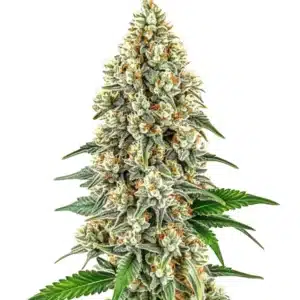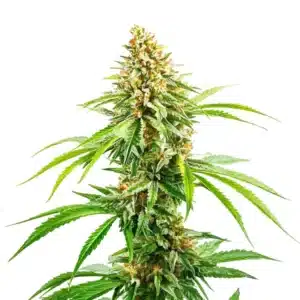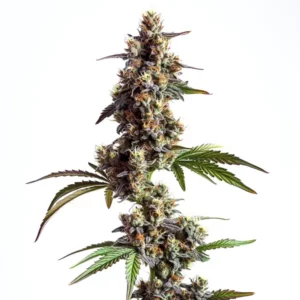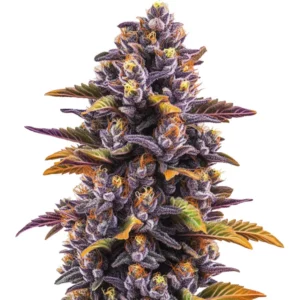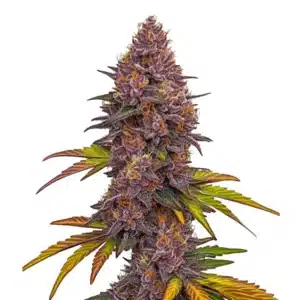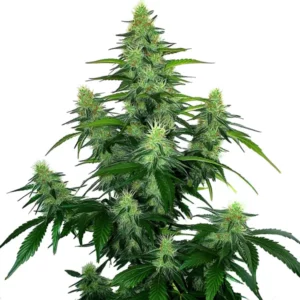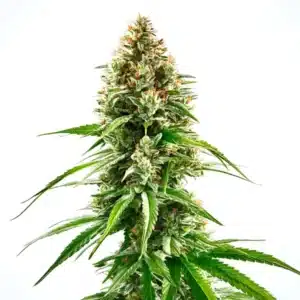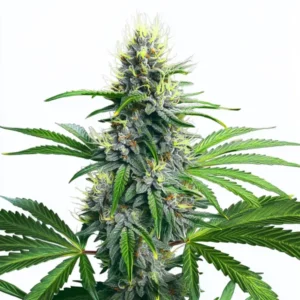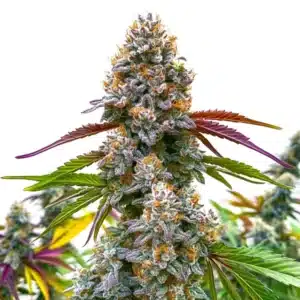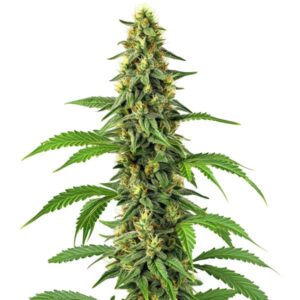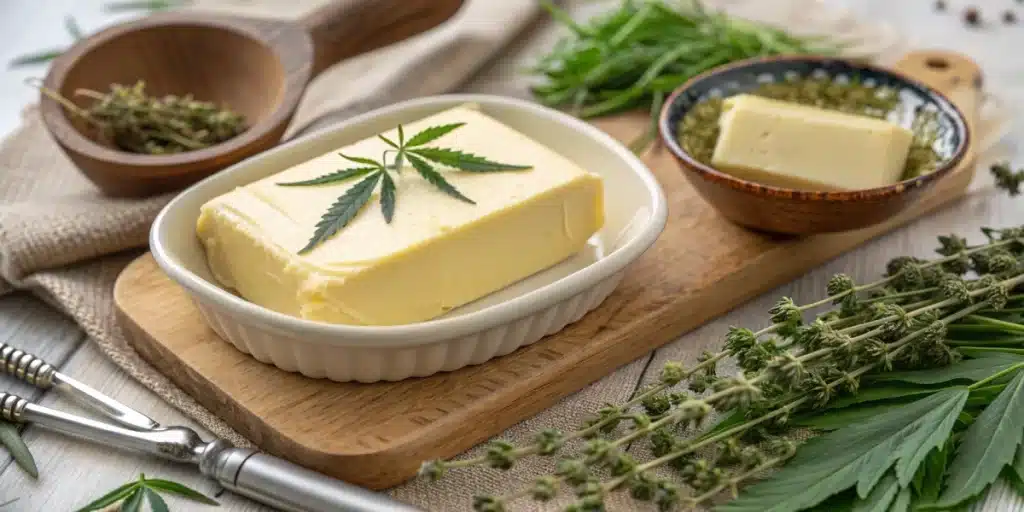
How to Make Cannabis-Infused Butter
The Basics of Cannabis-Infused Butter
Creating cannabis-infused butter, also known as cannabutter, can elevate your culinary experiences and allow for versatile uses in various recipes. Understanding the basics is crucial for a successful infusion process, ensuring both potency and flavor meet your expectations. Whether you’re a seasoned cannabis user or a curious newcomer, mastering the art of making cannabis-infused butter can open a new dimension of edible creations.
Before diving into the specifics of how to make cannabis-infused butter, it’s important to note the significance of selecting quality cannabis and butter. The quality of your ingredients will directly influence the final product’s taste and potency. Typically, unsalted butter is preferred to control sodium levels in your recipes, and choosing a strain of cannabis that complements your flavor preferences is recommended. From brownies to savory dishes, the possibilities are vast when armed with a batch of well-prepared cannabutter.
Recommended Strains
Cinderella 99
|
|
THC | 13% - 17% (Medium) |
|
|
Type | Feminized |
|
|
Yield | High |
|
|
Phenotype | 20% Indica / 80% Sativa |
Cinderella 99 Fast Version
|
|
THC | 17% - 20% (Medium) |
|
|
Type | Fast Flowering |
|
|
Yield | Low |
|
|
Phenotype | 40% Indica / 60% Sativa |
Key Ingredients and Equipment
To make cannabis-infused butter, you’ll need some basic ingredients and equipment. At the heart of this process is cannabis, butter, and water. The water helps regulate temperature and prevents the butter from scorching during the infusion. Using high-quality, unsalted butter is recommended for the best results. The choice of cannabis strain will depend on your personal preference for flavor and effects.
As for equipment, you’ll need a grinder, a saucepan, a strainer or cheesecloth, and a storage container. A thermometer is also useful to ensure proper temperature control during the infusion process. Each piece of equipment plays a role in ensuring that the infusion is both effective and efficient. Proper preparation and organization will allow for a smoother process, making the creation of cannabis-infused butter an enjoyable experience.
Benefits of Infused Butter
Cannabis-infused butter offers numerous benefits, making it a popular choice among cannabis enthusiasts. One of the primary advantages is its versatility. Cannabutter can be used in various dishes, from baked goods to gourmet meals, making it a staple in the kitchen for those who enjoy cannabis-infused cuisine. Its adaptability allows users to control dosage and experiment with different recipes.
Moreover, infused butter provides a discreet way to consume cannabis. Unlike smoking or vaping, edibles like cannabutter offer a smoke-free experience, which can be more appealing to those who prefer not to inhale cannabis. This method also allows for prolonged effects, as the cannabis is metabolized differently when consumed orally. With these benefits, it’s no surprise that cannabis-infused butter continues to gain popularity among culinary enthusiasts and cannabis consumers alike.
Promos & Deals
Step-by-Step Preparation Process
Decarboxylation of Cannabis
Decarboxylation is a crucial step in making cannabis-infused butter, as it activates the psychoactive components in cannabis. Without this process, the THC in the plant remains in its acidic form, THCA, which does not produce the desired effects. To decarboxylate your cannabis, grind it coarsely and spread it evenly on a baking sheet lined with parchment paper.
Preheat your oven to 240°F (115°C) and bake the cannabis for about 30 to 40 minutes, stirring occasionally to ensure even heating. This process will convert THCA to THC, unlocking the plant’s full potential. Proper decarboxylation is essential for achieving the desired potency in your cannabis-infused butter, so taking the time to do it right is well worth the effort.
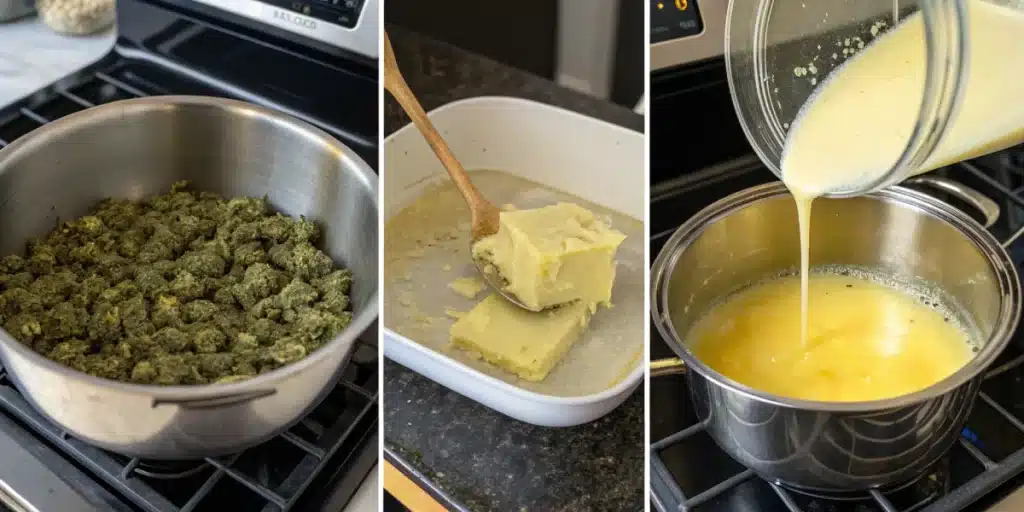
Infusion Techniques and Timing
Once your cannabis is decarboxylated, you can begin the infusion process. Combine your butter and water in a saucepan over low heat, allowing the butter to melt slowly. Add the decarboxylated cannabis to the melted butter and stir gently. Maintaining a low temperature is key to preserving the cannabinoids and terpenes that contribute to the butter’s effects and flavor.
Simmer the mixture on low heat for 2 to 3 hours, stirring occasionally. Ensure the temperature does not exceed 200°F (93°C) to prevent degradation of cannabinoids. Once the infusion is complete, strain the mixture through a cheesecloth or fine strainer to remove plant material. Allow the mixture to cool before transferring it to a storage container. Your cannabis-infused butter is now ready for use in a variety of recipes.
Managing Dosage and Potency
Calculating Cannabis Dosage
Determining the right dosage for your cannabis-infused butter is essential for achieving the desired effects. To calculate the dosage, start by determining the THC content of your cannabis. This information is usually available on the packaging or can be obtained through lab testing. Understanding the potency of your cannabis will help you estimate the THC content in your butter.
A general rule of thumb is that one gram of cannabis with 10% THC will contain approximately 100mg of THC. If you use this gram in your infusion, the resulting butter will have about 100mg of THC in total. By dividing the total THC by the number of servings, you can calculate the approximate dosage per serving. This step is crucial for ensuring that your cannabutter meets your potency preferences and provides a consistent experience.
Adjusting Recipes for Potency
Once you’ve calculated the dosage of your cannabis-infused butter, you can begin adjusting recipes to suit your potency needs. If you find that your butter is too potent, consider diluting it with regular butter until you reach the desired strength. Conversely, if you’re seeking a more potent effect, increase the amount of cannabutter in your recipes or use a higher THC concentration in your initial infusion.
Experimenting with different recipes and dosages can help you find the perfect balance for your taste and tolerance. Remember that edibles can take longer to take effect compared to other consumption methods, so start with small amounts and wait at least an hour before consuming more. Adjusting your recipes and understanding the potency of your cannabis-infused butter will enhance your culinary experiences and ensure a safe, enjoyable experience.
Storage and Usage Tips
Proper Storage Conditions
Storing your cannabis-infused butter properly is crucial for maintaining its potency and flavor. To ensure longevity, keep your cannabutter in an airtight container in the refrigerator. This will prevent exposure to air and moisture, which can degrade the cannabinoids over time. For longer storage, consider freezing the butter. This method can extend its shelf life for several months, making it convenient for infrequent users.
Labeling your container with the date of infusion and the estimated potency per serving is also recommended. This practice ensures that you know exactly what you’re consuming and can adjust your recipes accordingly. By following these storage tips, you can enjoy the benefits of your cannabis-infused butter for an extended period without compromising quality.
Versatile Culinary Applications
Cannabis-infused butter is an incredibly versatile ingredient, lending itself to a wide range of culinary applications. From sweet treats like cookies and brownies to savory dishes like pasta and sauces, the possibilities are virtually limitless. Its versatility allows you to incorporate cannabis into your favorite recipes seamlessly, enhancing the flavors and effects of your meals.
When using cannabis-infused butter in cooking, it’s important to remember that heat can affect the potency. To preserve the cannabinoids, avoid high-temperature cooking methods, such as frying or grilling. Instead, consider using cannabutter in recipes that require lower cooking temperatures, such as baking or slow-cooking. By exploring different culinary applications, you can fully enjoy the benefits of your cannabis-infused butter in a variety of delicious dishes.
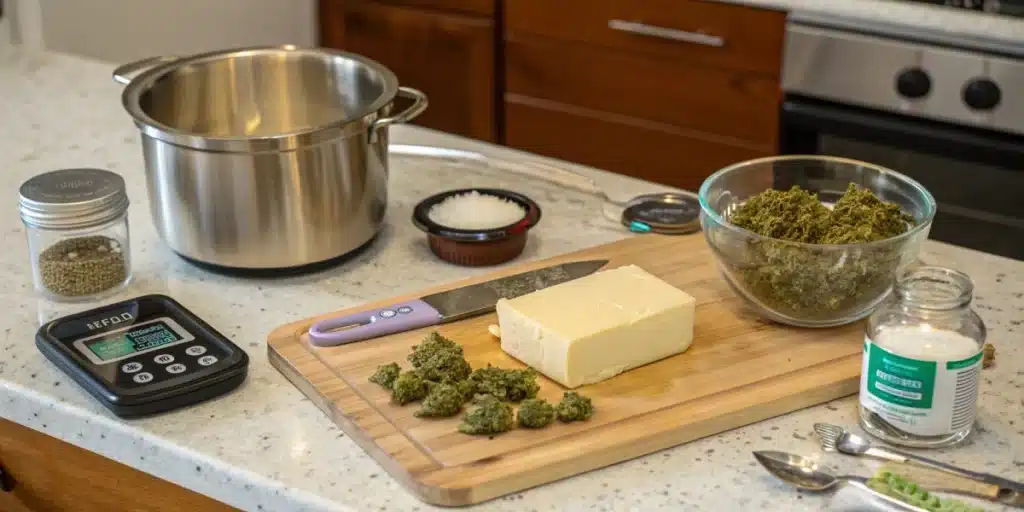
FAQs about How to Make Cannabis-Infused Butter
What is the best way to decarboxylate cannabis?
The best way to decarboxylate cannabis is to bake it in an oven at a low temperature. Preheat your oven to 240°F (115°C) and spread the ground cannabis evenly on a baking sheet lined with parchment paper. Bake for 30 to 40 minutes, stirring occasionally to ensure even heating. This method effectively activates the THC, making it ready for infusion.
How long should the butter be infused?
The butter should be infused over low heat for 2 to 3 hours. Keep the temperature below 200°F (93°C) to preserve the cannabinoids and terpenes. Stir occasionally to ensure even distribution and prevent scorching. Once the infusion is complete, strain and cool the butter before use.
How can I determine the potency of my infused butter?
To determine the potency of your infused butter, start by knowing the THC content of your cannabis. Calculate the total THC in your infusion based on the amount of cannabis used and its potency. Divide the total THC by the number of servings to estimate the dosage per serving. This will help you gauge the strength of your cannabutter.


